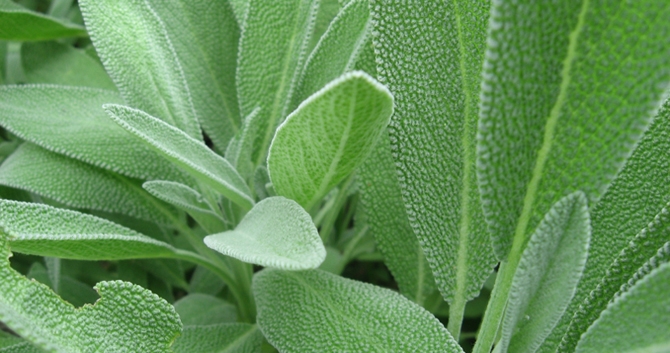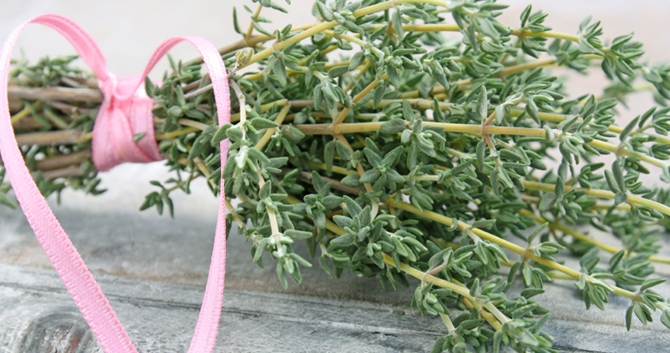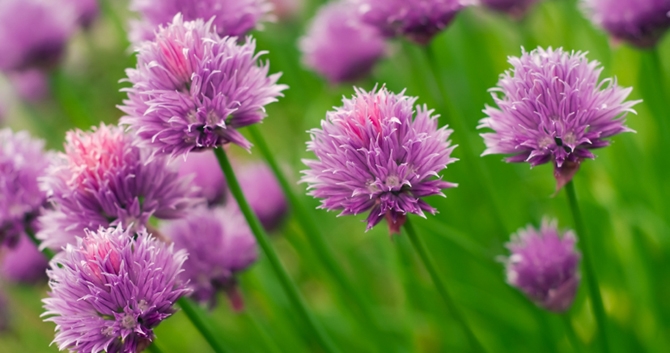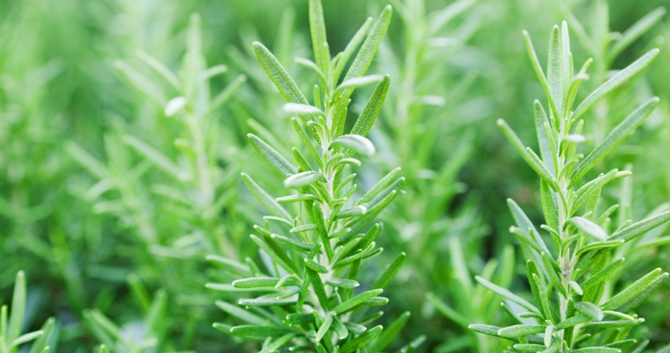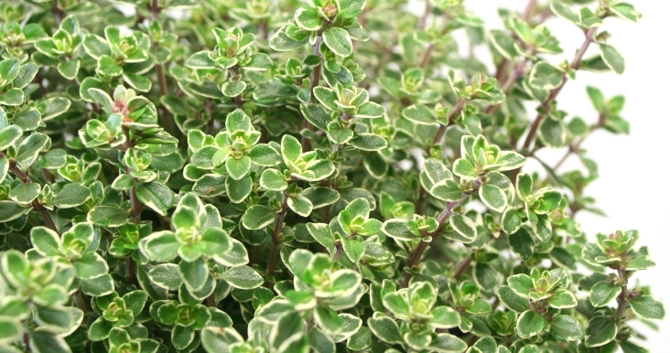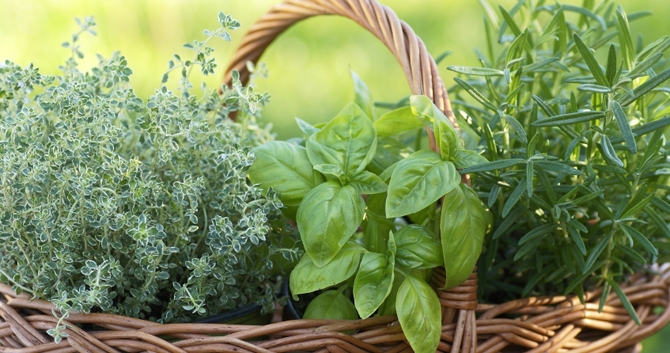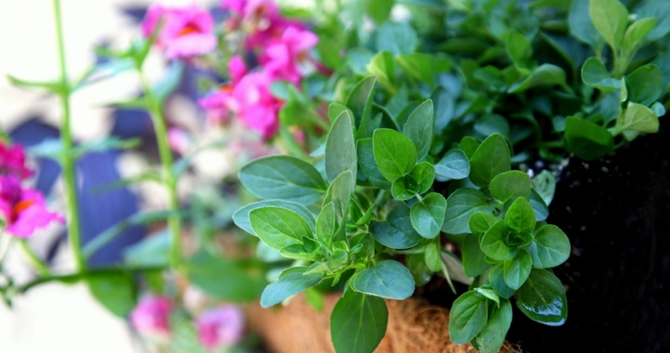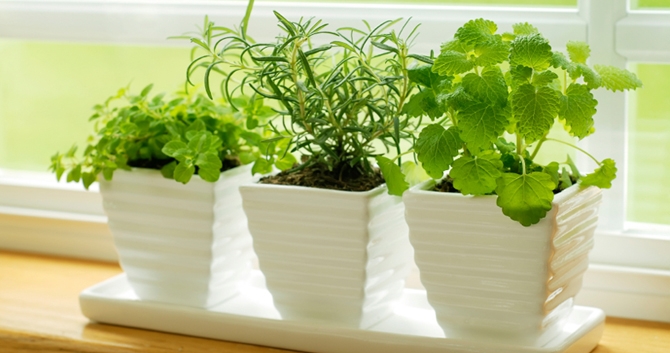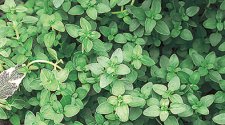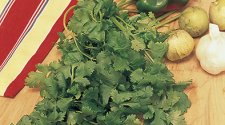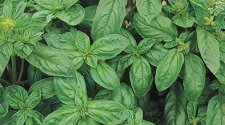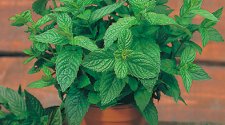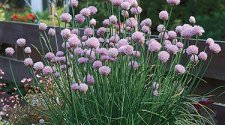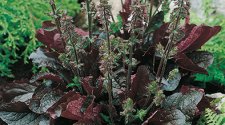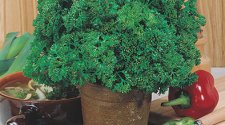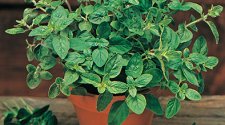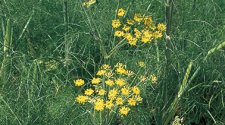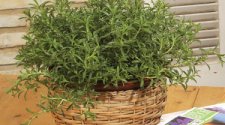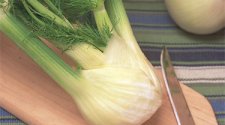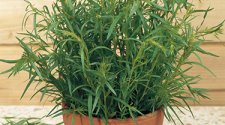Herbs are a seductive addition to any garden, adding fragrance and texture to containers, window boxes, hanging baskets, and vegetable plots. Equally at home in the flower garden as they are in the kitchen, herbs are easy to grow indoors or out, content with minimal attention and requiring little space
A windowsill, deck or garden filled with fresh herbs is as charming as it is practical; a way to explore new flavors or elevate old favorites, having fresh herbs at your fingertips is an everyday indulgence no cook should be without!
Imagine picking herbs you’ve personally tended, the scent drifting in the air as you snip a few sprigs, releasing the oils, the flavors strong and bright, adding a new dimension to familiar recipes.
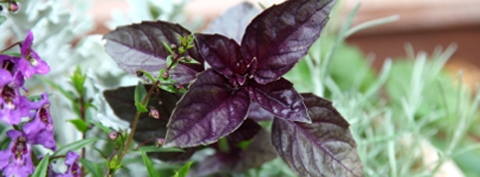 With all the basil varieties to choose from follow your nose to choose your favorite
With all the basil varieties to choose from follow your nose to choose your favorite
Some of the most popular herbs in many cultures include:
- Basil is a member of the mint family with a peppery aromatic flavor that perfectly complements tomatoes, onions, garlic, and olives. Sweet basil is an essential flavor in French, Italian, and Mediterranean cuisine. For the most intense flavor, add basil at the end of the cooking process - prolonged heat will cause its oils to dissipate.
- Basil is also a staple in Thai curries and Indian dishes, which use a type specially cultivated to create a distinctive licorice flavor not found in sweet basil. This called Thai Basil or Asian Basil, and its flavor holds up better in high or extended cooking temperatures than sweet basil. Holy Basil or Tulsi is revered in India, and is used in daily worship as well as for culinary and other applications.
- Chives are related to onions and leeks, imparting a similar but more delicate flavor with garlic undertones. Use their delicate purple blossoms as a pretty and flavorful garnish with a stronger flavor than the mild shoots.
- Cilantro (also known as Chinese parsley) is the leafy part of the coriander plant and is a member of the parsley family. It has a distinctive soapy flavor that is prized in Mexican, Latin, and Asian recipes. Cilantro is best when used raw but can be added at the end of cooking when the dish is being removed from the heat. When plants flower, scatter a few seeds for a second crop, and keep the rest of the spicy sweet coriander for seasoning vegetable, fruit and meat dishes.
- Dill is a pretty herb with feathery green leaves and a tangy flavor that pairs particularly well with garlic, lemon, and pepper. It’s a classic seasoning for fish or pork. Both the seeds and the leaves are used for pickling, sauerkraut, and beet dishes. Dill loses flavor when heated, so be sure to add it at the last minute to cooked dishes
- Fennel has a sweet, delicate, licorice flavor. Its feathery leaves and crisp stems can be eaten cooked or raw. Fennel seeds are also used as a condiment in both sweet and savory foods.
- Lemon Grass is an Asian herb used widely in Thai and Indonesian cuisine. It has a strong, aromatic lemon flavor and very tough fibrous stems. When using lemon grass, remove the root end and the green top, pound the remaining white stems to loosen the fibers and release the oils, and thinly slice.
- Marjoram is a member of the mint family, closely related to oregano but with a much milder taste. Its sweet citrus flavor and assertive evergreen scent complement meat, poultry, and fish (especially grouper, flounder, and cod). Fresh marjoram tastes best when added during the final moments of cooking.
- Mint leaves have a cool, sweet, refreshing taste, the most well-known of which are spearmint and peppermint. It should be picked fresh and used immediately as leaves don’t last for more than a day after harvest.
- Oregano (also known as wild marjoram) is another aromatic herb in the mint family. Used in Italian, Greek, and Mexican cuisine, oregano can be found on the table of any pizza restaurant alongside Parmesan cheese. Oregano has a high oil content and maintains its flavor and aroma when dried. Its flavor blossoms when sautéed in olive oil or butter.
- Parsley is so much more than a garnish on the side of the plate. Considered one of the four fine herbs of French cooking, it has a grassy flavor that adds depth to many dishes. Flat leaf parsley (also known as Italian parsley) has a stronger flavor than curly leaf parsley, which is the variety used for garnishes. Parsley doesn't hold up well to cooking, so add it at the very last minute.
- Rosemary has a vibrant pine flavor with hints of lemon undertones that mellow to a delicate mustard flavor when grilled or roasted. Unlike other herbs, rosemary holds up well to high temperatures and longer cooking times, making it an excellent companion for roasts, soups, and stuffing. Because the leaves are thick, chop them as finely as possible.
- Sage has velvety grey-green leaves with a savory, earthy flavor that intensifies as the leaves dry. Like rosemary, its flavor holds up better than most herbs to cooking and can be used with roasts, soups, sauces, and stuffing. Fresh sage is also delicious in homemade salad dressing and marinades
- Savory has an intense pepper flavor which is more pronounced in the winter variety than in the milder summer savory. Savory is widely used in Mediterranean cooking to flavor hearty vegetables like beans and mushrooms.
- Tarragon is considered one of the four fine herbs of French cooking. A cousin of the sunflower, it has an anise scent that pairs nicely with mustard and perfectly complements delicately flavored foods like fish, chicken, eggs, and cheese. Heat intensifies and fully releases the flavors of tarragon.
- Thyme belongs to the mint family and has a very aromatic clove-like flavor. Thyme adds depth to sauces, stews, soups, casseroles, and vegetables dishes.
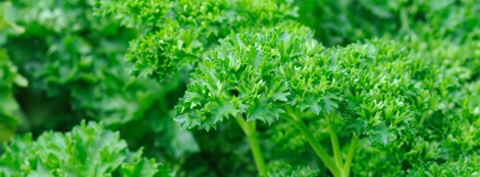 Parsley is considered one of the four fine herbs of French cuisine
Parsley is considered one of the four fine herbs of French cuisine
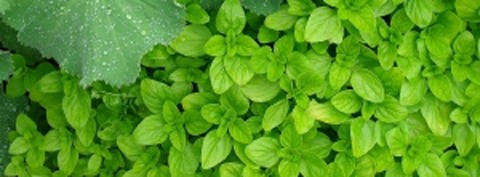 Marjoram makes a pretty ground cover that adds fragrance and spreads easily
Marjoram makes a pretty ground cover that adds fragrance and spreads easily
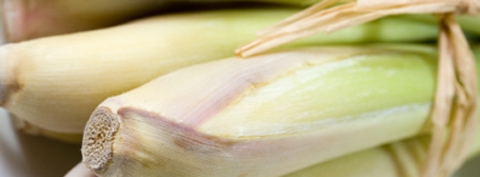 Lemon Grass is an Asian herb that adds a lemon flavor to soups, salads, and stir fires
Lemon Grass is an Asian herb that adds a lemon flavor to soups, salads, and stir fires
Getting Started:
Selecting which herbs to grow can be somewhat overwhelming – there are so many flavors and varieties to choose from. A good starting point is to grow those that you use most in your favorite recipes – from salad dressings and sauces to marinades, rubs, and soups. Use your senses - grow herbs whose aroma is appealing, whose foliage or flowers are beautiful, or whose flavors are mouthwatering.
Consider a theme for your herb garden and build around it - a culture, classic herb blends, a favorite food, or a cooking technique. Some of our favorites include:
Global Cuisines
Different cultures use different flavor profiles developed with a combination of herbs and spices. Some of the classic herbs used in global cuisines include the following fresh herbs in stews, stir fries, sauces, casseroles, and soups:
Asian: cilantro, Thai basil, Japanese parsley, and lemongrass add a fresh note to stir fries, soups, and curries
French: Fine Herbes are a traditional blend of parsley, chive, chervil, and tarragon. Herbes de Provence is another classic blend used in Southern France that includes basil, marjoram, rosemary, summery savory, thyme, lavender flowers, and bay leaf
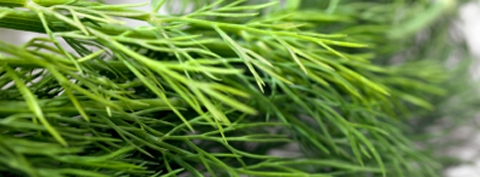 Dill pairs well with garlic, lemon and pepper to flavor fish, pork, or poultry
Dill pairs well with garlic, lemon and pepper to flavor fish, pork, or poultry
German: chives, dill, marjoram, parsley, and thyme
Greek: basil, dill, fennel, marjoram, and mint
Italian: basil, oregano, thyme, parsley, rosemary, and fennel are the iconic flavors of Italy
Mexican: basil, cilantro, oregano, rosemary, savory, thyme
Classic Culinary Herbs
There are also some classic herb combinations that add depth of flavor to simple dishes like grilled meats and salads. Soft herbs are good in marinades while woody herbs hold up to the heat of the grill. Others combine well with acids like lemon and vinegar and oils in salad dressings.
Classic Culinary Herbs: basil, marjoram, oregano, rosemary, sage, and thyme
Grilling: fennel, rosemary, savory, tarragon, and thyme
Vinaigrettes: chives, marjoram, oregano, parsley, rosemary, and thyme
Marinades: chives, mint, oregano, parsley, sage, and thyme
Herb and Meat Pairings
Different meats also pair best with certain herbs that bring out the flavors and add dimension to dishes where the protein is the star
Beef: basil, marjoram, oregano, parsley, rosemary, and thyme
Lamb: dill, mint, parsley, rosemary, and sage
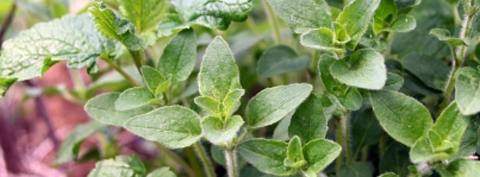 Oregano is a classic aromatic herb in Mediterranean cuisines
Oregano is a classic aromatic herb in Mediterranean cuisines
Fish: mild herbs like chives, dill, fennel, marjoram, and parsley pair well with delicate fish. Stronger flavors of basil, oregano, rosemary, sage, and thyme are good for stronger fish
Pork: fennel, rosemary, sage, savory, and thyme
Poultry: basil, chives, dill, fennel, savory, tarragon, and marjoram. Also try parsley, rosemary, thyme, and sage for roasting and grilling.
Care Tips:
Many types of herbs will happily grow together in a single container or garden bed as long as they share the same sunlight, water, and soil preferences – check the tags to be sure the combination works. For example, rosemary likes it hot and dry while parsley needs steady moisture—so you’ll want to grow these in separate containers.
Planting: Sun loving herbs include basil, fennel, marjoram, oregano, parsley, rosemary, sage, savory, thyme and tarragon. Herbs that prefer partial sun include chives, cilantro, dill and mint.
Watering: The types of leaves will help guide you on the amount of water needed. Herbs with soft succulent leaves like basil, chives, dill, mint, and parsley like steady moisture. Those with smaller, firmer leaves such as marjoram, oregano, rosemary, sage, thyme, and tarragon like to dry out between watering.
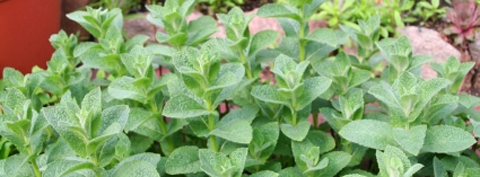 Peppermint should be picked fresh and used immediately as leaves don't store well
Peppermint should be picked fresh and used immediately as leaves don't store well
Mulching: Use organic mulch on all herbs to conserve moisture. For Mediterranean herbs that like sunny, dry conditions (oregano, rosemary, sage, thyme, and tarragon), mulch with white gravel to provide drainage and reflect the light.
Fertilizing: Herbs don’t require much fertilizer. In fact, heavy doses of nitrogen fertilizer will reduce the concentration of essential oils and degrade the flavor.
Harvesting:
When it comes to herbs, the rule of thumb is the more you pick, the more will grow – pinching back herbs will make them full and bushy. Most herbs are at their peak flavor just before flowering when the leaves have the highest concentration of essential oils. Once the plant has started flowering, the plant focuses its energy into seed production and leaves may become bitter and yellowed.
For best results, harvest herbs when buds are just beginning to form but before they have flowered. Cut early in the morning just after the dew has dried.

